Key Takeaways:
- Earwax is a natural substance made up of primarily dead skin, cerumen, sebum, and sweat.
- The glands that produce these components are the ceruminous and sebaceous glands. These glands help protect the ear, reducing likelihood of infection.
- The ear is self-cleaning for most people, allowing the wax to move out gradually on its own.
- Some medical conditions, medications, or even high stress levels can cause overproduction of earwax, which may require professional cleaning to manage.

Earwax is a popular topic on TikTok at the moment, with videos of ear cleaning going viral. But you might be wondering where earwax comes from: Ceruminous glands (aka, earwax glands), produce this waxy substance that protects our ears from debris and infection.
As an audiologist, I field many questions about earwax. If you came here to find out more about just what earwax is all about, you're in luck. In this article, we will dive into ceruminous glands, disorders, and issues and clarify some common earwax myths.
What is earwax?
Earwax is a natural substance created by the ear. It is composed of keratin (from dead skin), cerumen (from the ceruminous glands and pilosebaceous glands), sweat, sebum, and other debris.
How much earwax does a person have? Individual production of earwax will vary in terms of the amount, consistency, and even color of earwax.
As for the wax itself, there are two types: wet and dry. Wet wax is more typical for those of Western European and African descent, while dry wax is more typical for Asian or Native American descent. Wet wax can be either soft or hard but is typically made of 50% lipid. Dry wax is more likely to cause earwax impaction and generally is 20% lipid. Get more intel about earwax here.
A Closer Look At Ceruminous Glands
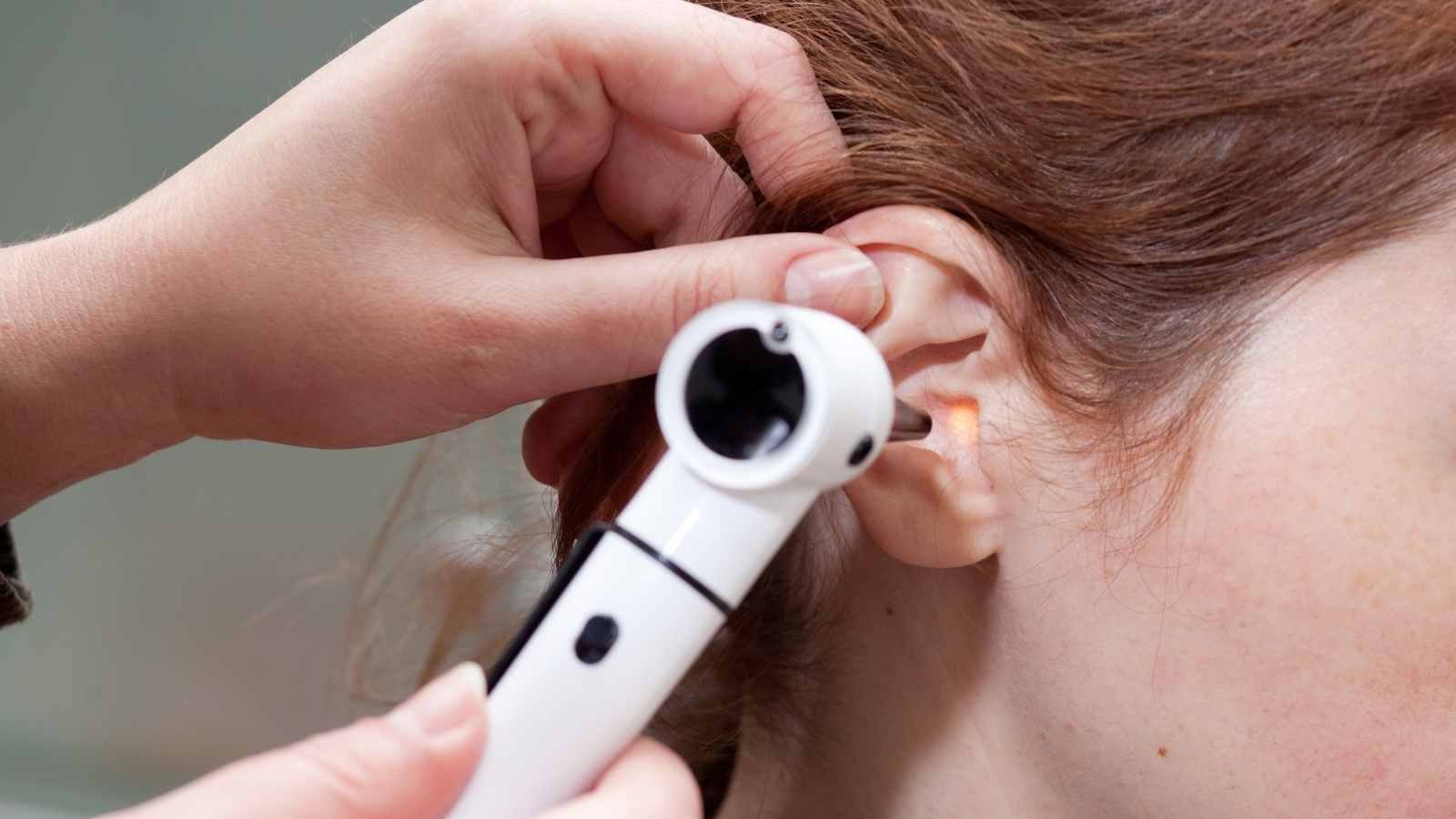
Two main glands in the ear canal are responsible for producing earwax:
- Sebaceous glands
- Ceruminous glands
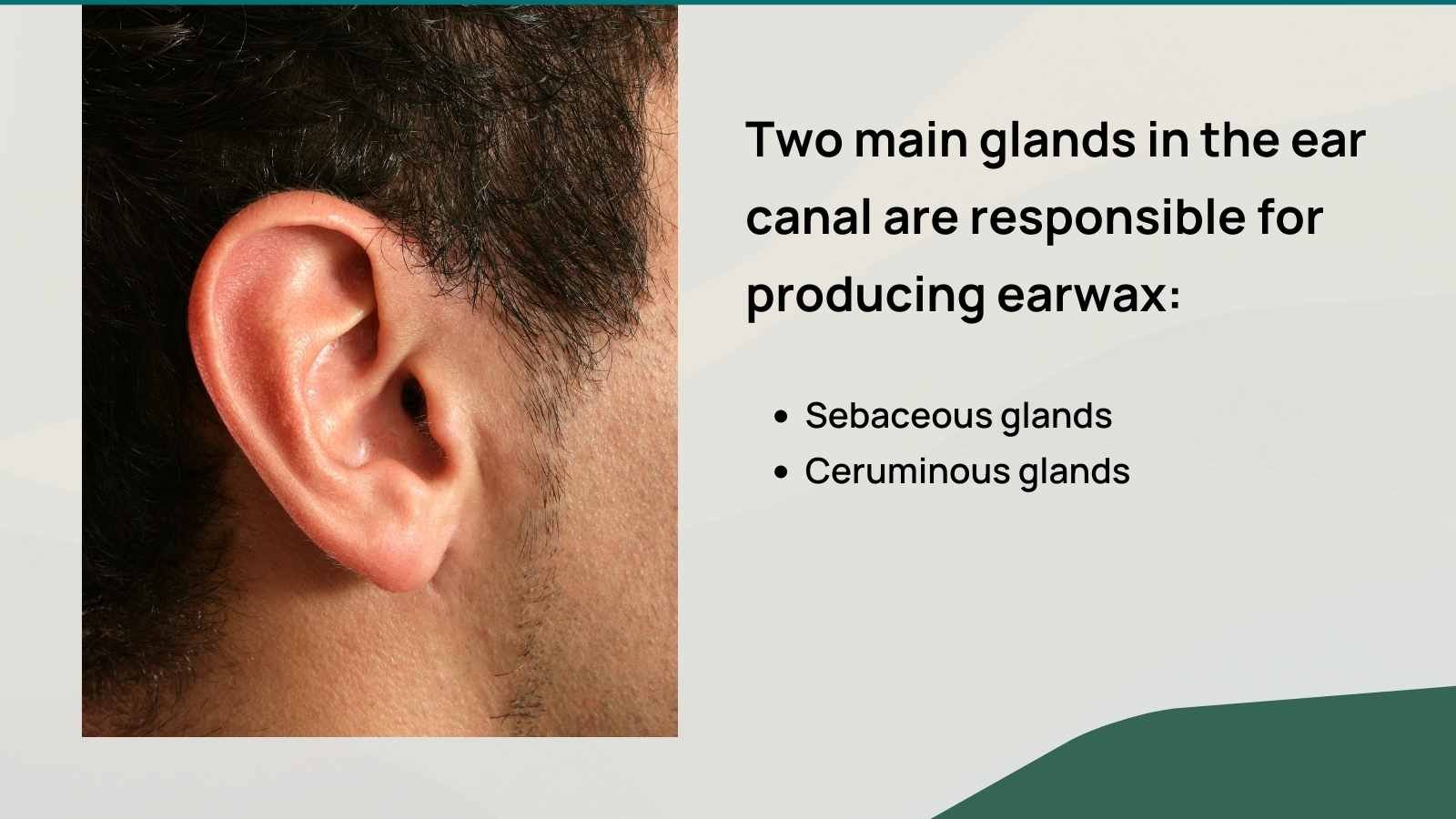
Sebaceous glands
These glands are located in hair follicles and produce an oily substance called sebum. In the ear, most of these glands live in the tiny hair follicles in the outer two-thirds of your ear canal. Sebaceous glands are tiny and are only visible under a microscope. They benefit the skin because sebum has oil and thus has a moisturizing property that prevents it from drying out.
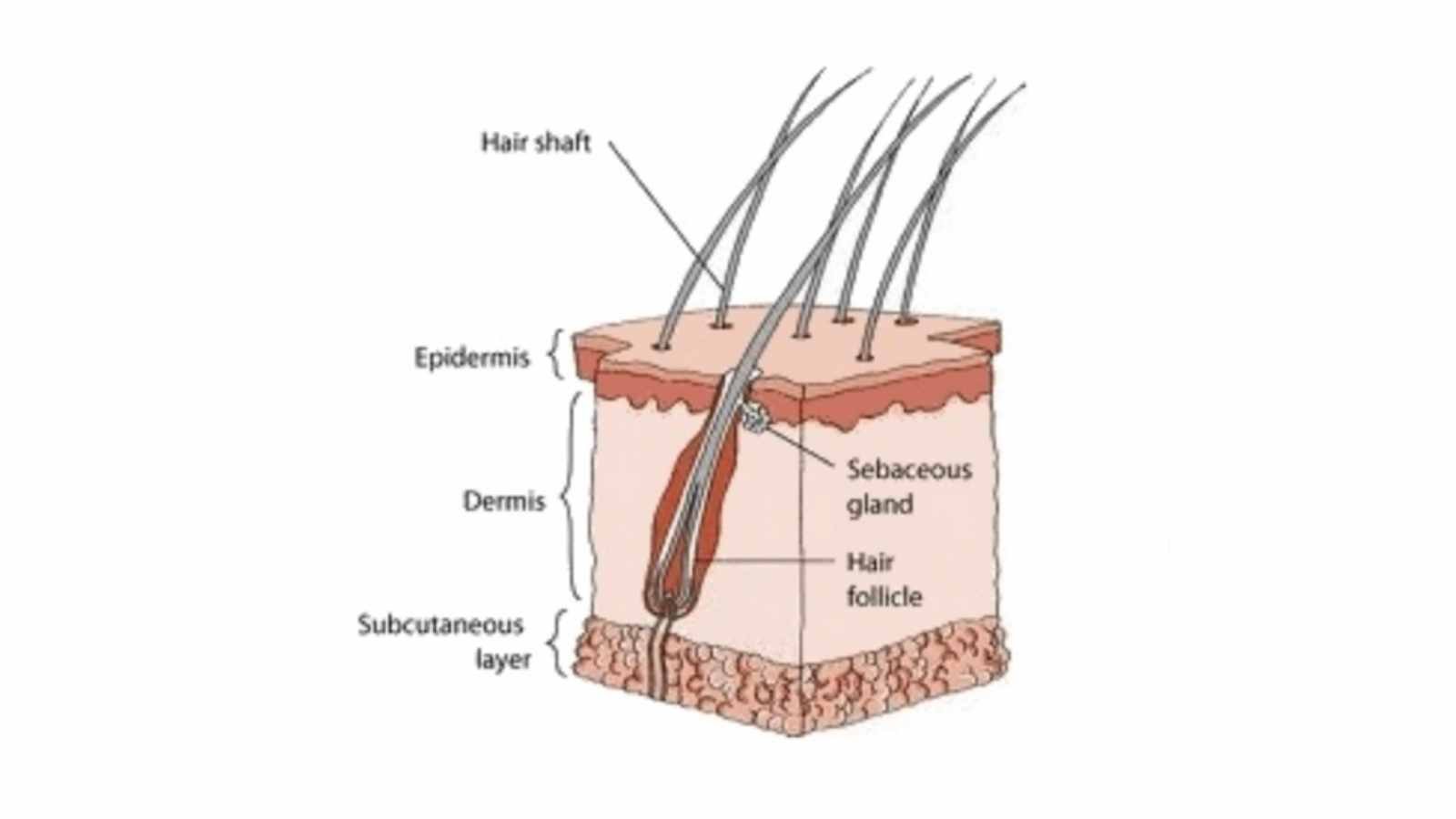
Ceruminous glands
These are specialized sweat glands that produce peptides and antimicrobial proteins. More broadly, these glands fall in the apocrine gland family. The average ear has between 1,000 - 2,000 ceruminous glands. According to a study from Sirigu et al., human ceruminous glands contain acid phosphatase, nonspecific esterase, glucose-6-phosphate dehydrogenase, 6-phosphogluconate dehydrogenase, and peroxidase.
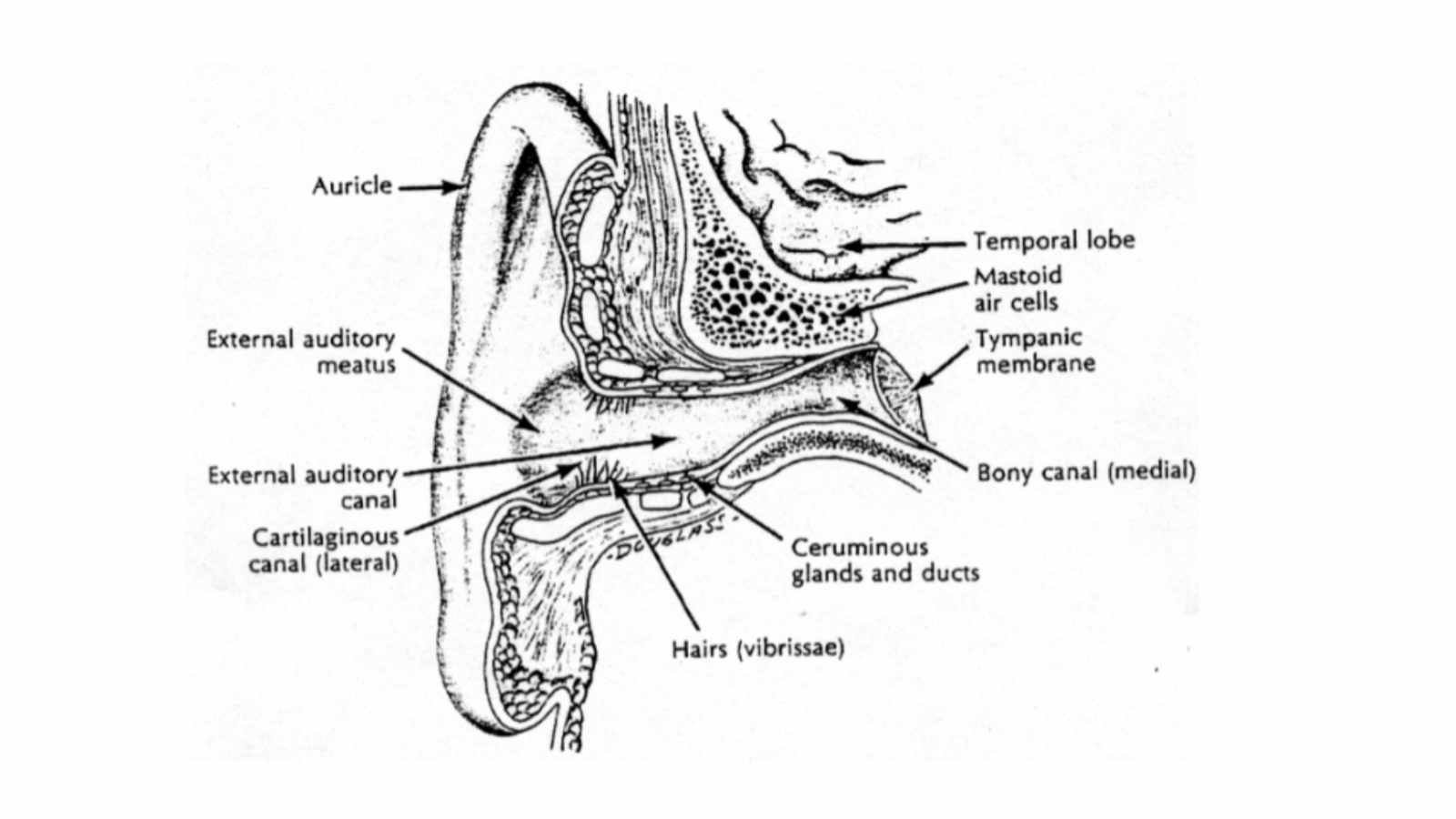
Earwax—also called cerumen—is created through a combination of sebum and sweat from the ceruminous glands. This substance is made up of a combination of long-chain fatty acids, squalene, cholesterol, and other substances that provide a barrier of protection from bacteria, fungi, and insects. The secretion of earwax is a healthy and natural process that keeps our ears clean and functioning properly.
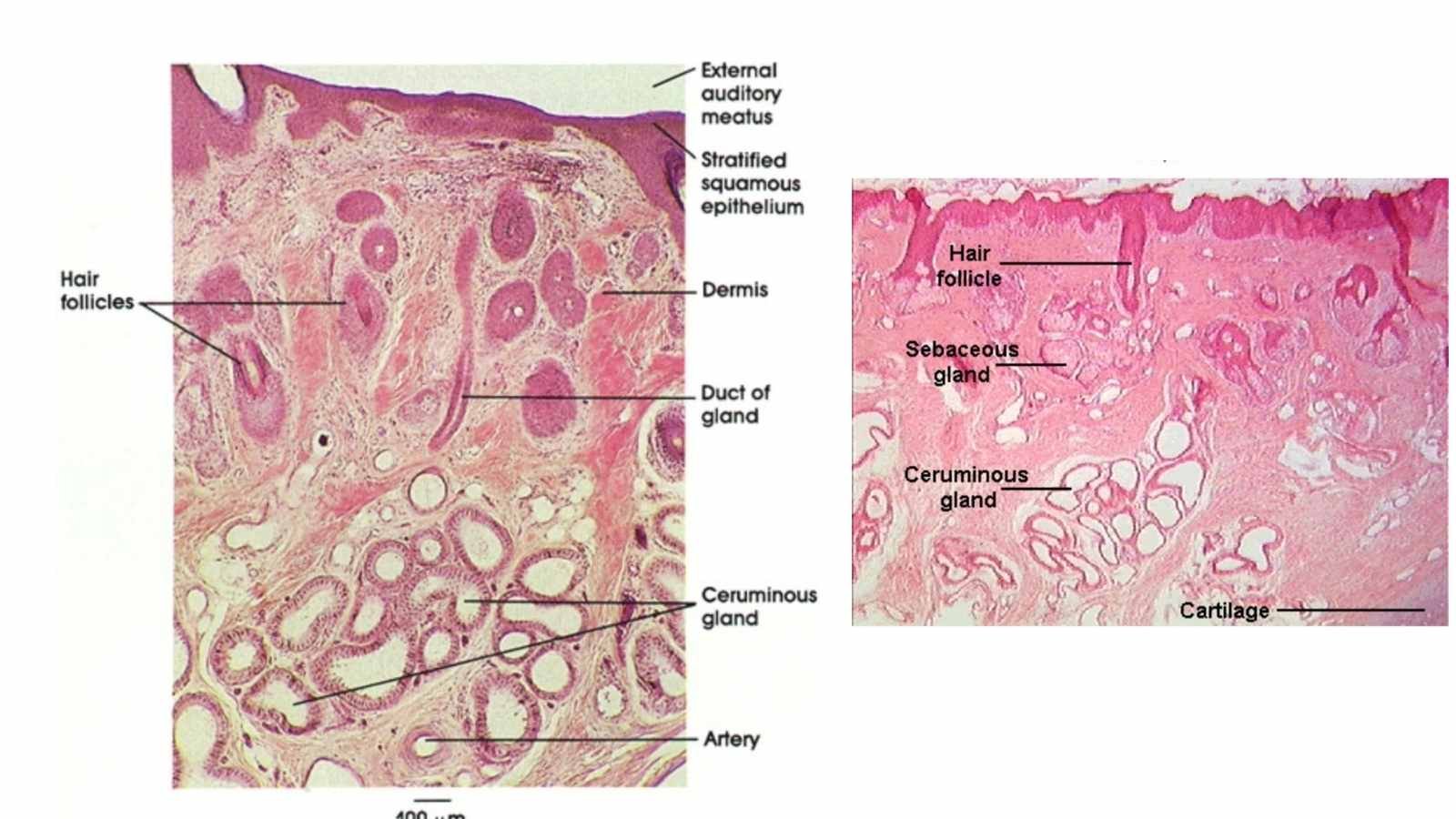
Disorders and Issues
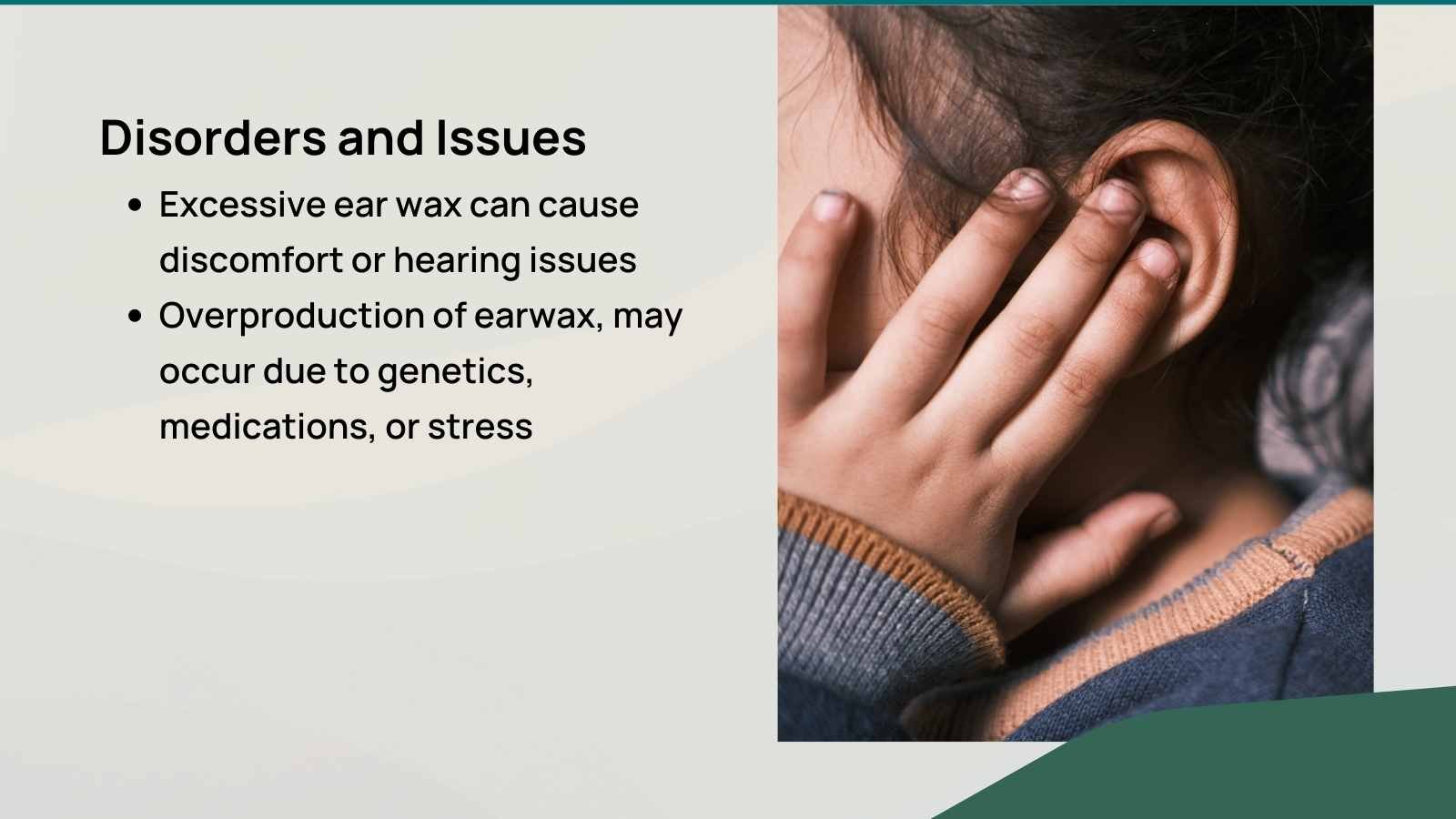
Excessive earwax can sometimes cause discomfort or hearing loss. This is typically due to improper cleaning or blockage of the ear canal. While some people experience more significant amounts of wax production than others due to their genetics or disorders that challenge normal earwax migration. For example, certain medical conditions such as eczema and psoriasis can also lead to an overproduction of earwax.
Overproduction of Earwax
Some of us are predisposed to the overproduction of earwax, which may occur due to genetics, medications, or stress. To note, individuals with oily skin tend to produce more sebum than average, and certain hormonal medications can also stimulate overproduction. Additionally, Parkinson's disease has been linked to the overproduction of sebum.
How does stress increase earwax production?
Have you experienced feeling jittery or sweating when nervous or stressed? Ceruminous glands are a type of apocrine gland involved in sweat production. So when you feel stressed, it can trigger increased sweat production, such as increased earwax production.
Reduced Production of Earwax
It is important to remember that some earwax is necessary for ear health, and eradicating it can cause dryness, itching, and even infection. Those with dry skin may have a low production of earwax or drier earwax.
Reduced earwax production can make it harder for the ear to push wax out naturally, making earwax build-up more likely. Narrow ear canals, curvy ear canals, and aging increase the likelihood of earwax build-up. One study from Fairey et al. in 1985 shows that low earwax production increases infection risk.
Rare Disorders
While very rare, obstructions and other disorders can arise from the ceruminous glands. For example, ceruminous gland adenomas obstruct the Eustachian tube and cause conductive hearing loss.
Typically not found in the middle ear, in rare cases, ceruminous gland neoplasms can rarely arise from the mucosal lining in the middle ear.
Myths About Earwax
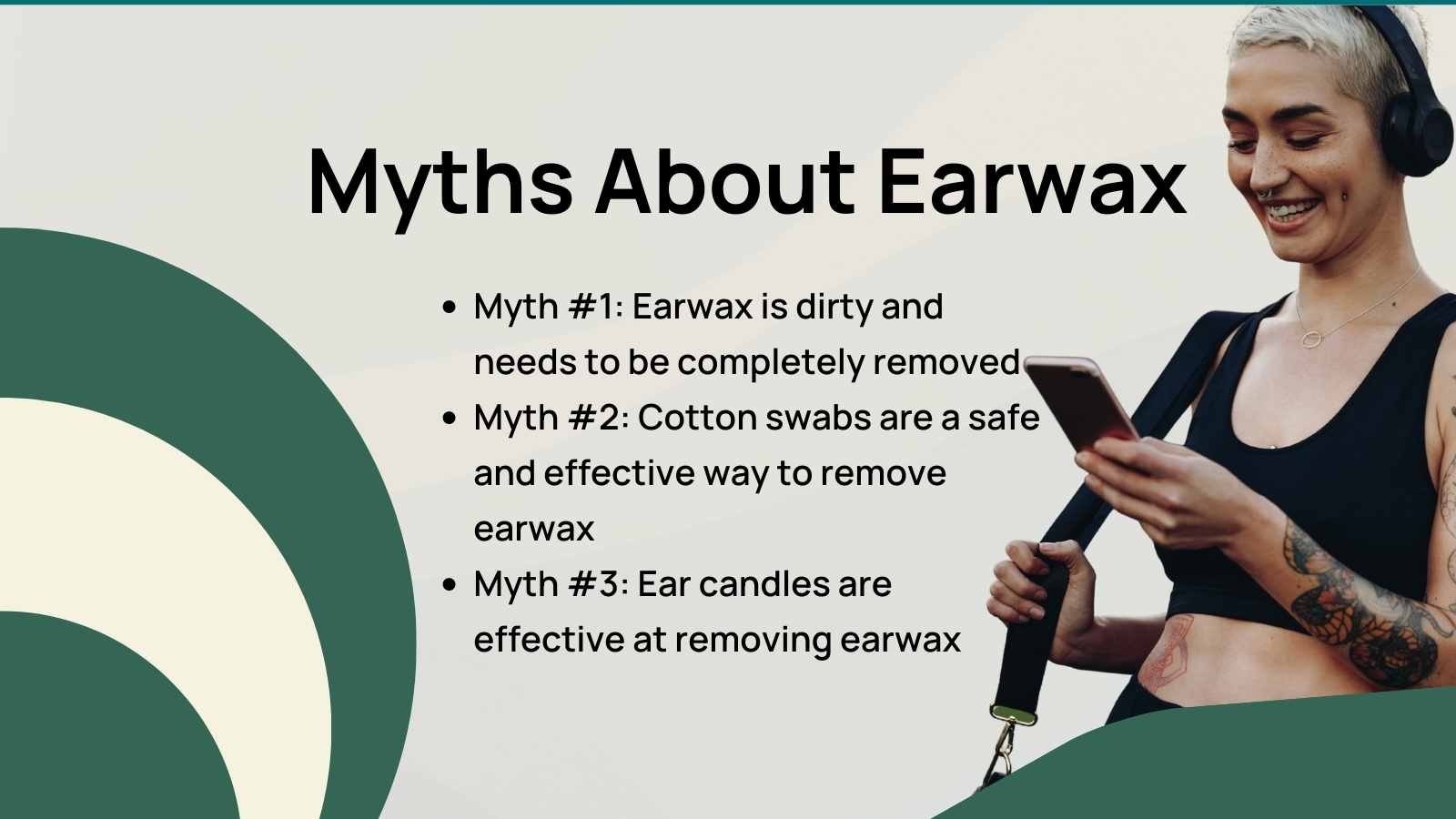
Let's look at a few common myths about earwax.
Myth #1: Earwax is dirty and needs to be completely removed.
In reality, some earwax is natural and healthy and should be left alone unless there is a problem. Wax helps keep germs and bacteria from entering the body. Having some wax in the ear also preserves moisture and prevents itchy, dry skin.
Myth #2: Cotton swabs are a safe and effective way to remove earwax.
Cotton swabs can push the wax further into the ear canal and cause blockage or damage. To help soften earwax, use a few drops of mineral oil and then flush the ear gently with water in the shower or with a bulb syringe.
Myth #3: Ear candles are effective at removing earwax.
Ear candles cause more harm than good. There is no evidence that they remove wax and may even cause third-degree burns to the delicate ear canal or eardrum skin. Read more about ear candles here.
Final Thoughts
Ceruminous glands are an essential part of ear health. You don't need to remove all earwax from the ear, and doing so is actually not healthy for your ear. Although we don't typically think of earwax this way, it is essential to remember its benefits to the ear canal.
However, some people are more prone to earwax build-up or disorders of the ceruminous glands. Rather than trying to remove earwax yourself, it is essential to seek the guidance of a professional. By doing this, you'll keep your ears healthy and functioning properly.






